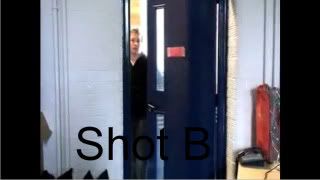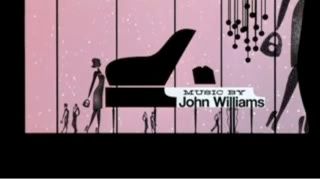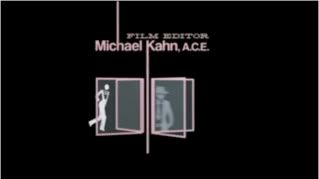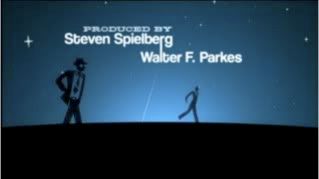Continuity editing is editing film/shots so that they seem to flow uninterrupted, from shot to shot. They can also include 'cross-cutting', where a scene cuts between two different settings where action is taking place at the same time, to make the same scene, in the final product.
The 180 Degree Rule.
The 180 degree rule, is a basic guideline, that states that two characters/elements in the same scene should always have the same right/left relationship to each other; for example, if the camera passes over the imaginary line, it becomes a reverse angle, making the scene look odd. If the camera is filming over the left should of one character, it would have to film over the other character's right shoulder, to make the scene look ordinary.

The Match on Action.
The shot was quite difficult to achieve, because you had to have the timing precise, otherwise the door would be opening twice.
Match on action is to connect two shots cut together by having a character finish an action in shot B begun in the shot A. For example: Shot A - close up of door handle, opening door. Shot B - Actor walking through door, mid shot.


Shot/Reverse Shot.
The alternating of two shots to show interaction/conversation between to characters or objects in each shot; for example, shot A is speaking and shot B shows the character who he/she is speaking to.


Overall I think that Tom & I edited our preliminary well. I'm most proud of our Match on Action shot because it flows naturally.
Rob captured all the scenes really well. Tom B and Tom H were helpful, and took direction good. I directed - I could've been more thoughtful with how the shots were placed, but overall i am proud with the final product.












